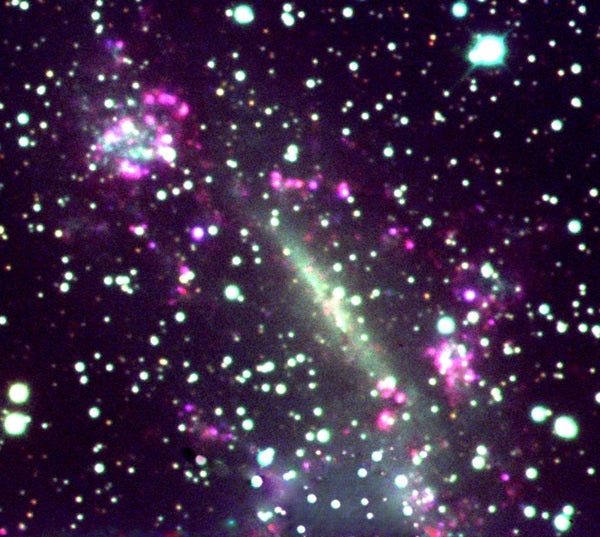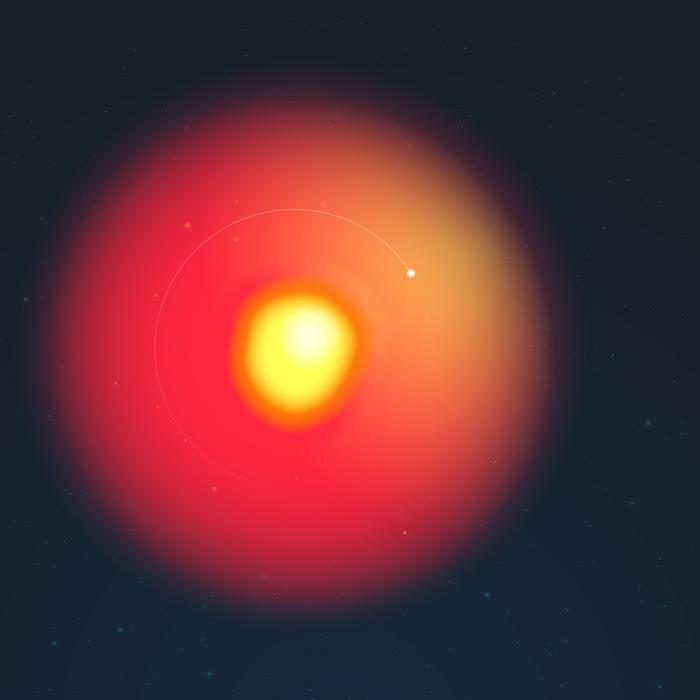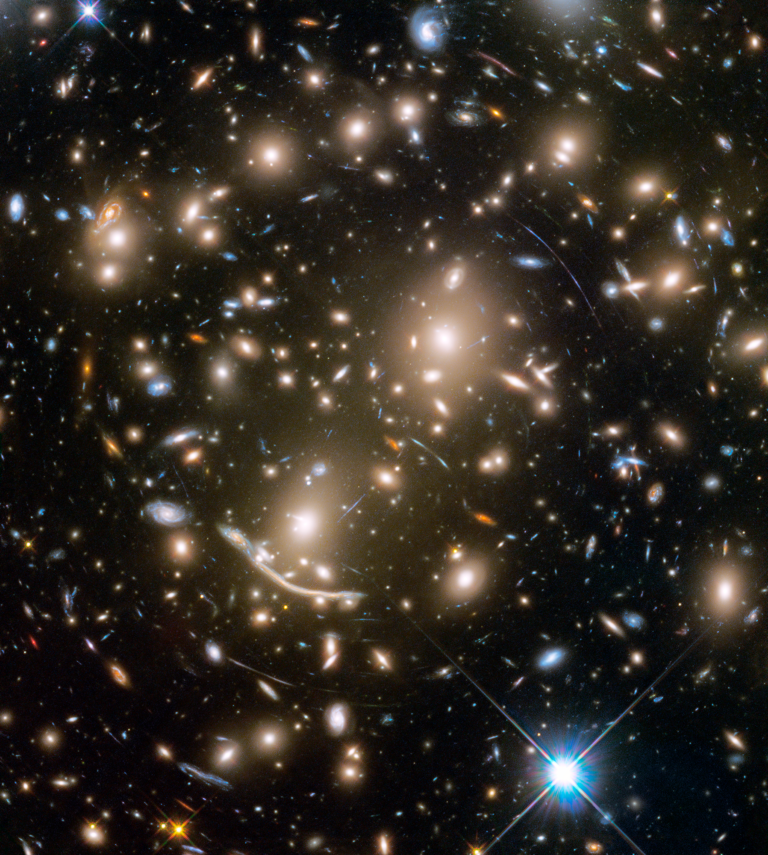The galaxy is 30 million light-years away, which means that it is relatively close by. It has been dubbed “Kathryn’s Wheel” after the famous firework that it resembles and also after the wife of the paper’s second author.
Such systems are rare and arise from “bull’s-eye” collisions between two galaxies of similar mass. Shock waves from the collision compress reservoirs of gas in each galaxy and trigger the formation of new stars. This creates a spectacular ring of intense emission and lights up the system like a Catherine wheel firework on bonfire night.
Galaxies grow through collisions, but it is rare to catch one in the process and extremely rare to see a bull’s-eye collision in progress. Fewer than 20 systems with complete rings are known.
Kathryn’s Wheel was discovered during a special wide-field survey of the southern Milky Way undertaken with the United Kingdom Schmidt Telescope in Australia. It used a narrow wavelength optical region centered on the so-called red “Hydrogen-alpha” emission line of gaseous hydrogen. This rare jewel was uncovered during a search of the survey images for the remnants of dying stars in our Milky Way. The authors were surprised to also find this spectacular cosmic ring sitting remotely behind the dust and gas of the Milky Way in the constellation Ara the Altar.
The newly discovered ring galaxy is seven times closer than anything similar found before and 40 times closer than the famous Cartwheel Galaxy. The ring is located behind a dense star field and close to a bright foreground star, which is why it had not been noted before. There are few other galaxies in its neighborhood; the odds of a collision in such an empty region of space are very low.
Parker said: “Not only is this system visually stunning, but it’s close enough to be an ideal target for detailed study. The ring is also quite low in mass — a few thousand million Suns, or less than 1 percent of the Milky Way — so our discovery shows that collision rings can form around much smaller galaxies than we thought.”
Zijlstra added: “It is not often that you get to name any objects in the sky. But I think Kathryn’s Wheel is particularly fitting, resembling as it does a firework and continuing the tradition of naming objects after loved ones.”
Smaller galaxies are more common than large ones, implying that collisional rings could be 10 times as common as previously thought. The authors intend to carry out more detailed studies on larger telescopes since the discovered galaxy is currently the only one of its kind close enough to permit study in such exquisite detail.










